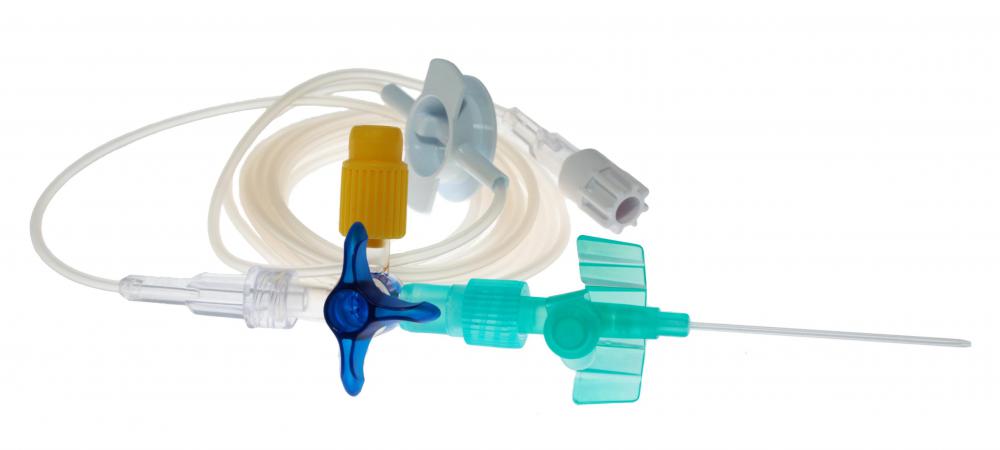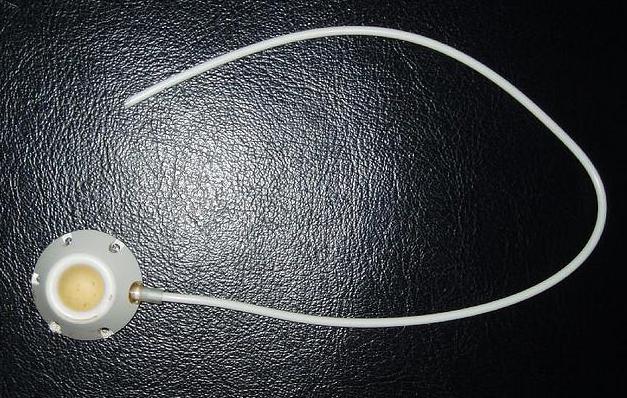At WiseGEEK, we're committed to delivering accurate, trustworthy information. Our expert-authored content is rigorously fact-checked and sourced from credible authorities. Discover how we uphold the highest standards in providing you with reliable knowledge.
What Is a Peripheral Cannula?
A peripheral cannula, or peripheral venous catheter (PVC), is the catheter placed inside a vein in the arm or hand for intravenous (IV) access to the circulatory system. The purpose of the cannula is to add fluids or medication to the bloodstream, or to remove blood for diagnostic testing. Choosing the diameter of the lumen, or opening, in the cannula is based on the need to increase or decrease the speed of the fluid traveling through the cannula tubing. Common side effects of cannula placement are bruising and bleeding from the insertion site. Serious complications include infection, air embolism, or phlebitis.
Before using a peripheral cannula, the skin around the insertion site will be cleaned with an isopropyl alcohol pad, which serves to remove most bacteria present on the skin. Next, a suitable vein is located and a hollow needle is inserted into the vein. Once placement in the vein is confirmed by a saline flush, the needle will be removed and the tubing of the cannula is left inside the vein.

The discomfort caused by the insertion of the peripheral cannula may be lessened by the use of a mild anesthetic. Adults may receive the anesthetic by injection. An anesthetic cream may be applied to the skin of children several minutes prior to the insertion of the needle to numb the skin.
After the peripheral cannula has been placed into the vein, medical guidelines for the patient’s safety must be followed. A peripheral catheter should be secured to the skin with medical grade adhesive tape to prevent the accidental removal of the cannula and to reduce the risk of the cannula moving within the vein. The cannula tubing needs to be replaced after no more than four days in the body due to the risk of infection. If a solution containing lipid, or fat molecules, is transfused into the patient through the peripheral cannula, it should be removed and replaced within 24 hours.

Common side effects after placement of the peripheral cannula are usually mild. There may be excessive bleeding from the cannula insertion site in patients that do not have normal blood clotting abilities. Blood that seeps into the surrounding tissues after the cannula is inserted may cause a bruise to form around the cannula.
Serious complications can occur as a result of the insertion of the peripheral cannula. The integrity of the skin barrier is comprised when the cannula is inserted, causing an increase in the risk of bacteria entering the body through the break in the skin and causing an infection. Small blood clots may form at the insertion point and enter the blood stream, causing phlebitis to occur. If air enters into the bloodstream from the cannula, an air embolism may cause a blockage of the flow of blood within the circulatory system.
AS FEATURED ON:
AS FEATURED ON:

















Discuss this Article
Post your comments